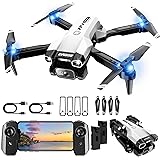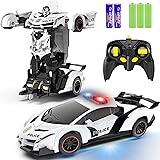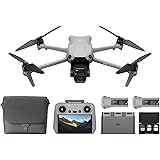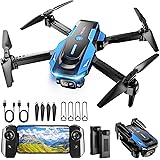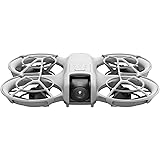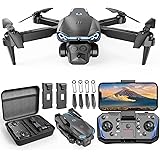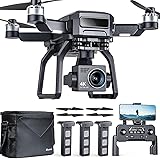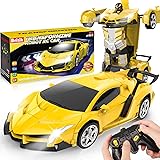Every hobbyist who has ventured into the exciting world of custom drone building knows the thrill and apprehension accompanying a maiden flight, let alone the subsequent test flights. Just as a new car undergoes rigorous testing on the track, or a complex software program cycles through beta versions, a custom-built aerial vehicle demands an iterative process of refinement. The drone engine sounds from the video above, captured during a “Tri Copter 2014 Test Flight 3,” resonate with anyone who has stood on the precipice of discovery, listening intently to their creation come alive.
This particular footage, a snapshot from 2014, offers a glimpse into a crucial stage of development for what was then, and remains, a fascinating configuration: the tri-copter. It isn’t merely about getting airborne; it’s about stability, responsiveness, and control. This article delves into the intricacies of tri-copters, the significance of their design, and the invaluable lessons learned through systematic flight testing, much like the process highlighted by this historical “Test Flight 3.”
Understanding the Tri-Copter: A Study in Asymmetry and Innovation
A tri-copter, by its very definition, is a multirotor drone equipped with three motors and three propellers. Unlike its more common sibling, the quadcopter, which boasts four motors strategically placed at each corner for inherently balanced lift and rotational control, the tri-copter introduces an element of elegant asymmetry. This design choice is not arbitrary; it presents unique challenges and opportunities in the realm of aerial mechanics.
Fundamentally, a tri-copter achieves yaw (rotation around its vertical axis) not by varying the speed of opposing motors, as a quadcopter does, but through a single, often servo-actuated, tilting rear motor. This mechanism acts like a rudder on a boat, allowing the motor to swivel and vector its thrust, thereby inducing rotation. Consequently, this reliance on a mechanical yaw system differentiates it significantly from the purely electronic control of a quadcopter. Builders choose tri-copters for various reasons, including the desire for a distinctive flight experience, the challenge of mastering a unique design, or sometimes even for specific payload considerations where a narrower footprint is advantageous.
Key Components and Their Interplay in a Tri-Copter Build
Constructing a functional tri-copter requires a careful selection and integration of several critical components, each playing a vital role in its performance and stability:
- Frame: The skeletal structure of the tri-copter. Materials like carbon fiber, G10 fiberglass, or aluminum are common choices due to their strength-to-weight ratio. The frame design directly impacts weight distribution, vibration characteristics, and the mounting options for other components.
- Motors and Electronic Speed Controllers (ESCs): Three brushless motors provide the thrust, and each requires a corresponding ESC to regulate power delivery from the battery based on flight controller commands. Matching motor KV (kilovolts per minute per volt) to propeller size and battery voltage is paramount for efficiency and thrust.
- Propellers: Chosen for their pitch, diameter, and material, propellers convert motor rotation into lift. Balanced propellers are crucial to minimize vibrations, which can severely impact flight controller performance and overall stability.
- Flight Controller (FC): This is the brain of the tri-copter. It interprets commands from the pilot’s remote control and sensor data (accelerometer, gyroscope, barometer) to stabilize the aircraft by adjusting motor speeds via the ESCs. Popular flight controllers in 2014 included boards running firmware like MultiWii or Naze32, which have since evolved significantly.
- Battery: Typically a Lithium Polymer (LiPo) battery, providing the necessary power. Capacity (mAh) and C-rating (discharge rate) are critical considerations for flight time and performance.
- Yaw Servo: Unique to the tri-copter, this servo is mounted at the rear and physically tilts the third motor to control yaw. Its speed, torque, and precision directly affect the tri-copter’s yaw authority and responsiveness.
The Imperative of Test Flights: Iteration and Refinement
The label “Test Flight 3” isn’t just a serial number; it symbolizes an ongoing dialogue between the builder and their machine. For any custom drone, particularly a tri-copter with its unique mechanical yaw system, the path to stable flight is rarely linear. Each flight is an opportunity to gather data, identify anomalies, and refine settings.
An initial “maiden flight” often aims for simply getting off the ground and achieving basic hover. Subsequent flights, like “Test Flight 3,” delve deeper into tuning and optimization. This iterative process is much like a sculptor refining their work; initial broad strokes give way to detailed chiseling, bringing the final vision to life. The goal is to move from basic control to precise, predictable, and responsive flight dynamics.
Pre-Flight Protocols and Safety Measures
Before any rotor spins, a rigorous pre-flight checklist is non-negotiable. This encompasses visual inspections for loose wires, secure propeller nuts, and structural integrity. Powering up for the first time or after modifications requires caution; ensuring the radio controller is linked correctly and that motor spin directions are accurate prevents immediate mishaps. Safety, therefore, transcends mere procedure; it represents a fundamental respect for the power of these machines. Always fly in an open, clear area, away from people and property.
Navigating Common Challenges in Tri-Copter Test Flights
Tri-copters, while rewarding, present specific hurdles during flight tuning that builders must overcome. Understanding these challenges is the first step toward effective troubleshooting.
Yaw Stability: The Servo’s Pivotal Role
The mechanical yaw mechanism is both the defining feature and often the most challenging aspect of a tri-copter. Unlike a quadcopter where yaw is electronically managed, the tri-copter’s servo must react swiftly and precisely to maintain heading. Issues like slow yaw response, uncontrolled drifting, or “wobbling” during turns frequently point to a combination of servo selection, mounting rigidity, and flight controller PID (Proportional, Integral, Derivative) tuning for the yaw axis. A servo that is too slow or too weak for the motor it’s tilting will inevitably lead to sluggish or unstable yaw performance, akin to trying to steer a speedboat with a bicycle handlebar.
Vibrations: The Silent Destroyer of Stability
Vibrations are the nemesis of any multirotor. In a tri-copter, they can originate from unbalanced propellers, bent motor shafts, loose motor mounts, or even the frame itself. These vibrations are not merely an annoyance; they introduce noise into the flight controller’s gyroscopic and accelerometer sensors, leading to erroneous readings. Consequently, the flight controller attempts to correct for non-existent movements, resulting in erratic flight behavior or “oscillations.” Identifying and mitigating vibrations—through propeller balancing, proper motor mounting, and frame dampening—is paramount for smooth and stable flight.
PID Tuning: The Art of Flight Control
PID tuning is arguably the most complex but rewarding aspect of drone building. It involves adjusting the Proportional, Integral, and Derivative gains within the flight controller’s software. These values dictate how the tri-copter reacts to errors in its desired attitude. Too high a P-gain, for example, might lead to aggressive overcorrections, making the drone twitchy or prone to oscillation, much like a car with overly sensitive steering. Conversely, too low a P-gain can make the drone feel sluggish and unresponsive. Achieving a perfectly tuned tri-copter requires patience, systematic adjustment, and repeated test flights, where each parameter is tweaked and its effect observed.
Power System Dynamics and Motor Synchronization
Ensuring the power system is robust and that all motors are synchronized is critical. In a tri-copter, unequal thrust or timing discrepancies between ESCs can lead to unwanted yaw or roll. Checking motor temperatures after flights can reveal issues like overworked motors or insufficient cooling. Monitoring battery voltage sag during aggressive maneuvers can also indicate an undersized battery or a power system struggling to meet demand.
Beyond 2014: Evolution in Drone Technology
While the “Tri Copter 2014 Test Flight 3” video provides a historical snapshot, the drone landscape has evolved dramatically since then. Flight controllers have become more powerful, miniaturized, and feature-rich, offering advanced autonomous modes, sophisticated filtering algorithms for vibration dampening, and user-friendly interfaces. Battery technology has improved, offering higher energy density and discharge rates. Furthermore, the advent of high-definition FPV (First Person View) systems has transformed the piloting experience, making intricate maneuvers and immersive flight more accessible. Despite these advancements, the fundamental principles of design, the challenges of physics, and the iterative process of testing and refinement remain timeless for any custom tri-copter builder.


